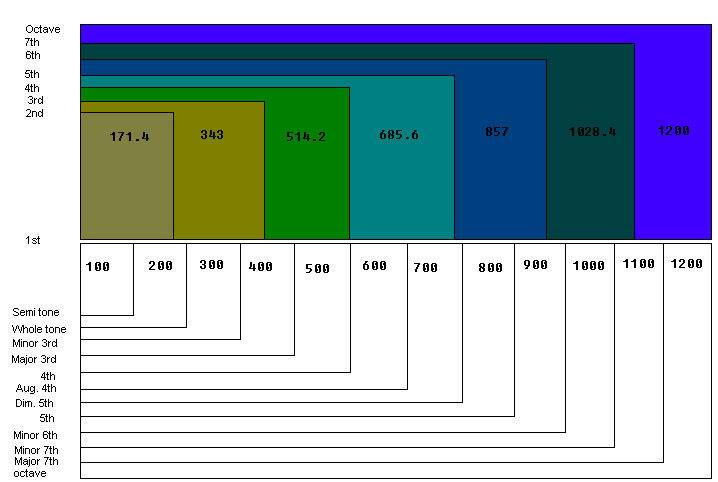As seen on fixed-pitch instruments, the Thai system of tuning has been tones in the octaves, functionally equidistant, though the voice and non-fixed-pitch instruments use tones beyond these seven. The term scale denoted an abstract series of tones derived from the system of tuning, presented in ascending order and forming the basis of a given composition of class of compositions. In Thai music, five fundamental tones, forming a pentatonic scale, are the basis of most compositions. The pattern is three consecutive tones, a skipped tone, two consecutive tones, and a skipped tone, or, 1-2-3-5-6. Many compositions, however, use six or seven tones. The "cent" system, devised in about 1884, for use in comparing intervals, is based on the Western tempered tuning system of twelve equidistant intervals (semitones) and was intended for use by those familiar with Western tuning and intervals. The octave is divided into 1,200 equal parts with each of the twelve Western semitones encompassing 100 cents, each whole tone 200 cents, and so on; in a decreasing amount a tempered quarter-tone would comprise 50 cents, an eight-tone 25 cents, and so on (the cent system applied to Thai tuning will be seen subsequently).
( Comparison of Thai and Western tuning system )
|
